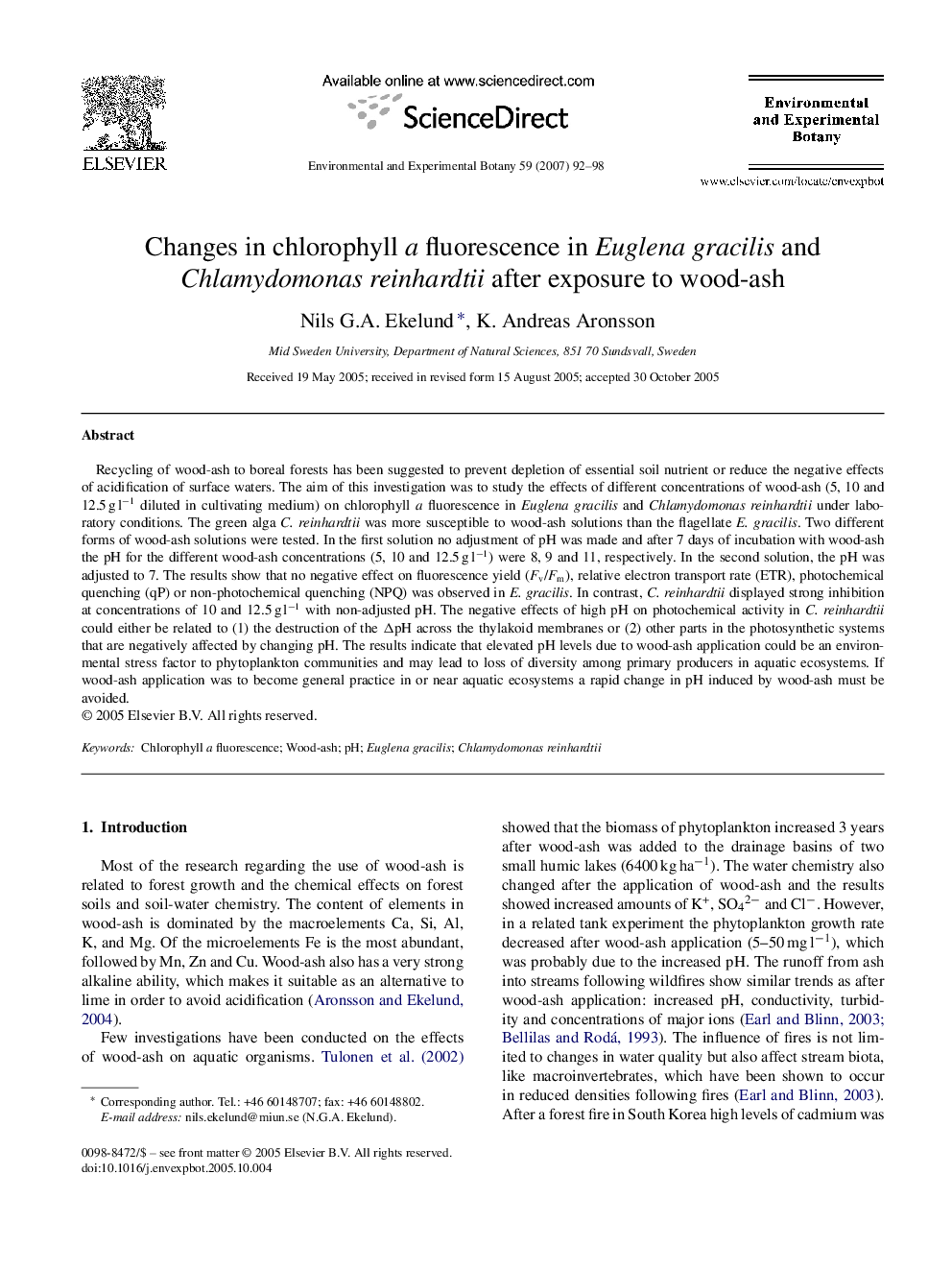| Article ID | Journal | Published Year | Pages | File Type |
|---|---|---|---|---|
| 4555530 | Environmental and Experimental Botany | 2007 | 7 Pages |
Recycling of wood-ash to boreal forests has been suggested to prevent depletion of essential soil nutrient or reduce the negative effects of acidification of surface waters. The aim of this investigation was to study the effects of different concentrations of wood-ash (5, 10 and 12.5 g l−1 diluted in cultivating medium) on chlorophyll a fluorescence in Euglena gracilis and Chlamydomonas reinhardtii under laboratory conditions. The green alga C. reinhardtii was more susceptible to wood-ash solutions than the flagellate E. gracilis. Two different forms of wood-ash solutions were tested. In the first solution no adjustment of pH was made and after 7 days of incubation with wood-ash the pH for the different wood-ash concentrations (5, 10 and 12.5 g l−1) were 8, 9 and 11, respectively. In the second solution, the pH was adjusted to 7. The results show that no negative effect on fluorescence yield (Fv/Fm), relative electron transport rate (ETR), photochemical quenching (qP) or non-photochemical quenching (NPQ) was observed in E. gracilis. In contrast, C. reinhardtii displayed strong inhibition at concentrations of 10 and 12.5 g l−1 with non-adjusted pH. The negative effects of high pH on photochemical activity in C. reinhardtii could either be related to (1) the destruction of the ΔpH across the thylakoid membranes or (2) other parts in the photosynthetic systems that are negatively affected by changing pH. The results indicate that elevated pH levels due to wood-ash application could be an environmental stress factor to phytoplankton communities and may lead to loss of diversity among primary producers in aquatic ecosystems. If wood-ash application was to become general practice in or near aquatic ecosystems a rapid change in pH induced by wood-ash must be avoided.
